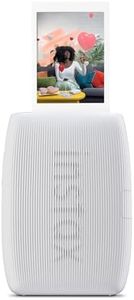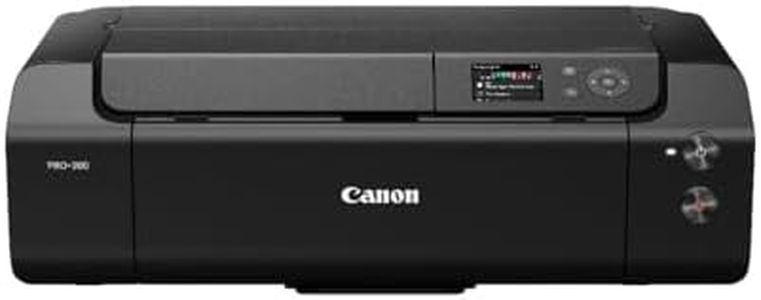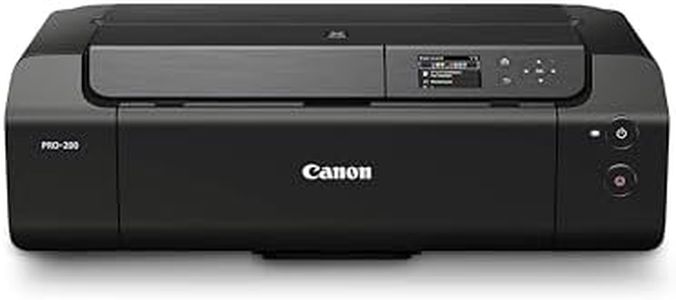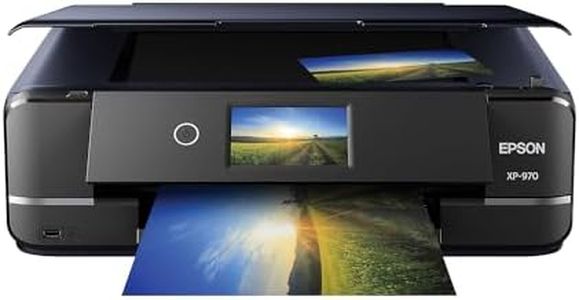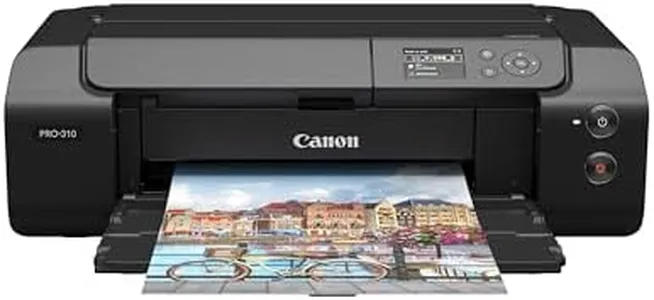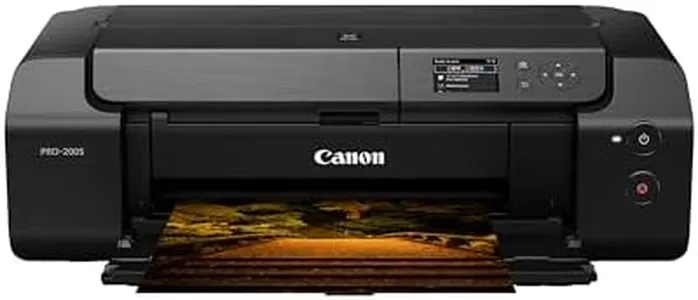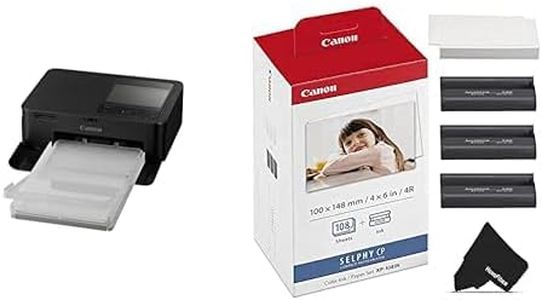We Use CookiesWe use cookies to enhance the security, performance,
functionality and for analytical and promotional activities. By continuing to browse this site you
are agreeing to our privacy policy
10 Best Professional Photo Printer
From leading brands and best sellers available on the web.Buying Guide for the Best Professional Photo Printer
Choosing a professional photo printer is all about matching your printing needs with the features and capabilities of the printer. Whether you're after gallery-quality art prints, portraits, or event photos, focusing on the right specifications will help you deliver stunning images every time. Think about the types of photos you will print, the typical print sizes you need, your workflow, and your desired level of control over color and detail. A good approach is to consider how each key feature affects the final output and how it fits with your typical work habits.Print Resolution (DPI)Print resolution, measured in DPI (dots per inch), indicates how many tiny dots of ink the printer can apply per inch of paper. This matters because higher DPI results in finer, sharper details and smoother gradients in your photos, which is crucial for professional work. Print resolution values can generally be divided into standard resolution (around 2400 x 1200 DPI), which is fine for small to medium prints with moderate detail, and high resolution (4800 x 2400 DPI or above), which is essential for large-scale, high-detail prints such as gallery displays. To pick the right resolution, consider the size and detail of your prints—a photographer specializing in large wall art or macro work benefits from higher resolution, while event or portrait photographers might find mid-range DPI sufficient.
Ink System (Number and Type of Inks)The ink system refers to how many separate ink cartridges the printer uses and whether they're dye-based, pigment-based, or a mix. More inks mean the printer can reproduce more colors and subtler details, especially in shadows and highlights. Ink systems typically range from basic (four to six inks) which cover general color needs, up to professional sets (eight to twelve inks) for photographers who demand extremely accurate color matching and smooth gradations. Dye inks tend to produce bright, vibrant colors for everyday display, but pigment inks usually offer better archival quality and fade resistance. If you create art prints to sell or exhibit, choose a printer with more inks and pigment-based options, but for casual portfolio or client proofing, a simpler system may suffice.
Print Size CapabilityPrint size capability defines the largest paper width and length your printer can handle. Standard desktop models often max out at sizes like 8.5 x 11 or A4, while professional printers support wide-format sizes such as 13 x 19 inches or even 17, 24, or more inches wide on roll paper. Think about your current and future projects: photographers producing posters, panoramas, or fine art will need the flexibility of larger print sizes, while those producing headshots, albums, or smaller portfolios can manage with standard-sized outputs.
Media CompatibilityMedia compatibility tells you what types of paper and other materials the printer can use, such as glossy, matte, fine art, canvas, or specialty photo papers. This matters because different projects call for different finishes and textures to make your photos stand out. Printers can range from accepting only standard photo papers to handling thick fine art paper and unique substrates. If you want to experiment with creative prints, look for wide media compatibility; stick to standard compatibility for conventional photo sizes and finishes.
Color Management SupportColor management is the printer's ability to work with color profiles (like ICC profiles), ensuring that the colors you see on your screen match what gets printed. This is vital for professionals who need consistent, predictable results across multiple devices or print runs. Some printers have built-in calibration tools and seamless profile handling, while entry-level models offer basic color adjustments. If color consistency is a top priority—such as for selling prints or matching client branding—prioritize printers with advanced color management support. For less critical uses, standard color options might be acceptable.
Connectivity OptionsConnectivity refers to the ways you can connect the printer to your computer or network, such as USB, Ethernet, and wireless (Wi-Fi) connections. Reliable, fast connections streamline your workflow, especially in busy studios or shared environments. USB is basic but direct, Ethernet is ideal for studio setups where multiple users print, and Wi-Fi offers convenience and flexibility. Choose the connectivity options that fit how and where you usually work—remote or collaborative studios benefit from network options, while solo artists may be fine with USB.
